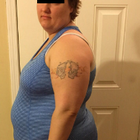Gastric Sleeve in Taipei
Search and Compare the Best Clinics and Doctors at the Lowest Prices for Gastric Sleeve in Taipei

Find the best clinics for Gastric Sleeve in Taipei
No pricing info available
Egypt offers the best prices Worldwide
Price: $ 777
From 128 verified reviews
ashley kauffman, 21 September 2020
At NTU hospital they are constantly processing high volumes of patients efficiently and with a happy attitude. I was in and out for my follow-up in less than 30 mins. Moreover, my previous recent experience in the ER department was very positive. All of the doctors and many of the staff can speak English. What’s more, they offer online appointment booking in English. The best place in Taiwan to go for any serious health concerns. The attitude of the staff is impressive considering how busy it gets.
From 136 verified reviews
Nana Hong, 18 September 2020
皮膚科彭家盈醫師問診親切仔細,五顆星是給她的
Compare Before & After Photos of _procedure_photos.phpGastric Sleeve


Front view


Full-side view


Front view


Front view


Front view


Front view
WHY US?
At Medijump, we're making medical easy. You can search, compare, discuss, and book your medical all in one place. We open the door to the best medical providers worldwide, saving you time and energy along the way, and it's all for FREE, no hidden fees, and no price markups guaranteed. So what are you waiting for?

Free

Best Price

Widest Selection

Risk-Free
What you need to know about Gastric Sleeve in Taipei

The Gastric Sleeve procedure, also known as Vertical Sleeve Gastrectomy or Sleeve Surgery, is a minimally invasive surgical method designed to advocate weight loss and promote healthier living. It garners acclaim from medical professionals due to its effectiveness in helping patients shed an average of 65 to 70% of excess weight.
The expert surgeons at NYBG utilize the single-incision laparoscopic technique, making a solitary entry point through the belly button. This innovative approach results in minimal to no scarring and significantly reduces the recovery duration.
The surgery itself only takes about 35 minutes. During this time, the surgeon implements a diminutive camera, a laparoscope, along with several other instruments to perform the operation. With the help of a stapling apparatus, 85-90% of the patient's stomach is removed, leaving behind a banana-shaped stomach that is a mere 10-15% of the original volume.
What does a Gastric Sleeve Procedure Involve?
For your surgery, you'll be under general anesthesia, ensuring you're comfortably asleep throughout the procedure. Your surgeon will perform a laparoscopic surgery, making several small incisions on your upper abdomen where a laparoscope and tiny surgical instruments will be inserted.
Following this, the anesthesiologist will guide a sizing tube through your mouth and down into your stomach. With a laparoscopic stapler, the surgeon will partition the stomach, resulting in a narrowed vertical sleeve. The excess portion of the stomach that has been detached is then extracted from the abdomen through one of the incisions. Lastly, your surgeon may carry out a dye study or an upper endoscopy to double-check for any potential leaks in the newly formed sleeve.
How Long Should I Stay in Taipei for a Gastric Sleeve Procedure?
Following a surgical procedure, patients typically reside in a rehabilitation centre for an initial 2 to 3-day period. Please note, that this duration can flex based on how the individual's body responds to the healing process.
It is highly recommended patients continue their stay in the pertinent vicinity for an additional 3 weeks subsequent to the surgical procedure. Such an arrangement allows for meticulous post-operative monitoring and fosters an environment conducive to a smooth recovery. A surgical procedure entails both physical and mental recovery; the latter being equally pertinent. An additional stay provides the necessary time to recuperate, rest and efficiently handle any post-surgical complications that could potentially arise.
What's the Recovery Time for Gastric Sleeve Procedures in Taipei?
The time it takes to fully recover from Gastric Sleeve varies from one person to the other. Factors such as personal healing rates, specific techniques used during the surgery and overall health condition affect the recovery time. Generally, patients would typically need about three to five weeks for recovery.
During this healing period, it's essential to maintain a healthy lifestyle to speed up recovery and reduce potential complications. Part of this involves a proper diet. Since the procedure usually results in a smaller stomach size, you will need to adjust your eating habits. It's recommended to consume smaller meals throughout the day, focusing more on nutrient-rich foods.
Exercise is another crucial component of the post-procedure period. Stick to a regular workout routine to support sustained weight loss and overall health improvement. They suggest several strategies and provide important tips to stay healthy during your recovery period.
What sort of Aftercare is Required for Gastric Sleeve Procedures in Taipei?
Going through the Gastric Sleeve is just the start of your path toward better health. After the treatment, it's crucial that you take good care of yourself for the full healing process and to ensure the success of the procedure. Part of this care involves sticking to a healthy diet, regular exercise, taking any medications as recommended by your doctor and keeping up with medical check-ups. Your dedication to these new lifestyle habits, especially with regard to your diet and physical activities can notably speed up your recovery and assist you in achieving your weight goals.
Equally, your mind requires care after the Gastric Sleeve. Undergoing such changes could bring about feelings that may impact your emotional state and overall adherence to these new lifestyle changes. In such cases, seeking professional mental health support can be beneficial in managing any stress, anxiety, or depression you might encounter. Balancing physical well-being and mental health is key to a full recovery and maintaining long-term health after undergoing the Gastric Sleeve.
What's the Success Rate of Gastric Sleeve Procedures in Taipei?
The achievement fee for the Gastric Sleeve in Taipei is usually high. Success is often gauged through the quantity of weight lost. Typically, patients can assume to shed approximately 60% to 70% of their excess weight.
The general fitness enhancement often discovered with Gastric Sleeve can result in improvements or maybe a complete decision of weight problems-related situations like hypertension, sleep apnea, cardiovascular sicknesses, and type 2 diabetes. However, fulfilment after the Gastric Sleeve is dependent on the commitment to lifestyle adjustments and publish-op care. Results can range based totally on the dedication to nutritional modifications along with other elements like exercising, genetics, and typical fitness popularity.
Are there Alternatives to Gastric Sleeve Procedures in Taipei?
Yes, there are options for the Gastric Sleeve in Taipei. These can be classified into non-surgical and surgical alternatives. Non-surgical alternatives include weight loss plans and lifestyle adjustments, scientific weight reduction applications, and prescription weight reduction medicines.
On the other hand, surgical options for the Gastric Sleeve consist of different bariatric surgical procedures like gastric bypass surgical procedure, adjustable gastric banding, duodenal transfer, and gastric balloon techniques. These options carry their personal set of advantages, fitness implications, and requirements.
What Should You Expect Before and After the Procedure?
Before the Gastric Sleeve, patients usually have an intensive scientific evaluation and are required to observe a pre-operative eating regimen, to limit surgical headaches and useful resource recovery. Patients additionally undergo a psychological assessment to evaluate their emotional readiness for surgery and the subsequent way of life modifications.
Post-manner, maximum patients will stay in the clinic for two to a few days to be monitored. Gradual nutritional changes occur over the next several weeks, progressing from clean liquids to pureed foods, onto gentle foods and finally, strong meals. Both vitamins and exercise plans are customized for man or woman sufferers.
What's the Key to Long-Term Success with Gastric Sleeve in Taipei?
Surgical intervention is an important part of the Gastric Sleeve, but it's not the only factor that ensures long-term success. A larger part of this success is the adoption of a healthier lifestyle post-procedure. Regular exercise, attending follow-up medical appointments, vigilantly monitoring your vitals, keeping an eye on your nutrition intake, and adhering to prescribed medication regimes are fundamental components of this lifestyle. A commitment to these practices guarantees sustainable results, as the procedure alone may not uphold the achieved results indefinitely.
Incorporating changes into daily routines forms another essential half of this post-treatment lifestyle. Conscious meal planning, mindful eating, moderating portion sizes, and avoiding high-calorie drinks or snacks are beneficial dietary changes. Also, routine physical activity and maintaining an active life can help retain an optimized body weight. More importantly, mental and emotional support from loved ones - and at times professional counselling - can greatly improve the chances of adherence to these new routines. Finally, remember that this isn't just a treatment procedure but a significant shift towards a healthier lifestyle for the betterment of your future.
Where Can I Get the Best Gastric Sleeve Care in Taipei?
There are many great healthcare centres in In Taipei. They offer good care and treatments for people having the Gastric Sleeve. When picking on one, remember to look at the doctor's experience, the certifications of the facility, what other patients say about them, and if they are accredited.
Make sure they also offer aftercare once the Gastric Sleeve is done. This includes advice about what to eat and how to keep healing. This can help you stay healthy after surgery and is very important for the success of the Gastric Sleeve. Meeting with a support group can also help you in the long run.
How Can Gastric Sleeve Improve My Quality of Life?
Gastric Sleeve can significantly improve your quality of life in various ways. The principal benefit of it is the significant weight loss you can achieve. This dramatic change in body mass can reduce your vulnerability to long-term health issues like diabetes and heart disease.
Another advantage of Gastric Sleeve is the improvement in your confidence. A boost in self-esteem inevitably leads you to feel content and positive about life. Severe health problems like sleep apnea can also be mitigated with this treatment. So, Gastric Sleeve isn't just about physical transformation, it's about leading a healthier, happier life in Taipei.
Whilst the information presented here has been accurately sourced and verified by a medical professional for its accuracy, it is still advised to consult with your doctor before pursuing a medical treatment at one of the listed medical providers
No Time?
Tell us what you're looking for and we'll reachout to the top clinics all at once
Enquire Now

Popular Procedures in Taipei
Prices Start From $1

Prices Start From $359

Prices Start From $435

Prices Start From $75

Prices Start From $435

Recommended Medical Centers in Taipei for Gastric Sleeve

- Interpreter services
- Translation service
- Religious facilities
- Medical records transfer
- Medical travel insurance
- Health insurance coordination
- TV in the room
- Safe in the room
- Phone in the room
- Private rooms for patients available

- Interpreter services
- Translation service
- Religious facilities
- Medical records transfer
- Medical travel insurance
- Health insurance coordination
- TV in the room
- Safe in the room
- Phone in the room
- Private rooms for patients available

- Interpreter services
- Translation service
- Religious facilities
- Medical records transfer
- Medical travel insurance
- Health insurance coordination
- TV in the room
- Safe in the room
- Phone in the room
- Private rooms for patients available

- Interpreter services
- Translation service
- Religious facilities
- Medical records transfer
- Medical travel insurance
- Health insurance coordination
- TV in the room
- Safe in the room
- Phone in the room
- Private rooms for patients available

- Interpreter services
- Translation service
- Religious facilities
- Medical records transfer
- Medical travel insurance
- Health insurance coordination
- TV in the room
- Safe in the room
- Phone in the room
- Private rooms for patients available

- Interpreter services
- Translation service
- Religious facilities
- Medical records transfer
- Medical travel insurance
- Health insurance coordination
- TV in the room
- Safe in the room
- Phone in the room
- Private rooms for patients available

- Interpreter services
- Translation service
- Religious facilities
- Medical records transfer
- Medical travel insurance
- Health insurance coordination
- TV in the room
- Safe in the room
- Phone in the room
- Private rooms for patients available

- Interpreter services
- Translation service
- Religious facilities
- Medical records transfer
- Medical travel insurance
- Health insurance coordination
- TV in the room
- Safe in the room
- Phone in the room
- Private rooms for patients available

- Interpreter services
- Translation service
- Religious facilities
- Medical records transfer
- Medical travel insurance
- Health insurance coordination
- TV in the room
- Safe in the room
- Phone in the room
- Private rooms for patients available

- Interpreter services
- Translation service
- Religious facilities
- Medical records transfer
- Medical travel insurance
- Health insurance coordination
- TV in the room
- Safe in the room
- Phone in the room
- Private rooms for patients available
Gastric Sleeve in and around Taipei
About Taipei
Taipei City is the capital and one of the special municipalities of Taiwan. It is located in the northern part of the island in a basin between the Central Mountains and the Yangming Mountains. Characterized by friendly people and safe streets, this city is one of the most fascinating places to visit. It has an amazing history, delicious food, and a blend of Chinese culture with a fusion of Japanese, American, and Southeast Asian influences. While most visitors normally visit the city to indulge in its culture and go sightseeing, more and more people are traveling here to have medical treatment, due to the high-quality medical standards, professional teams, high-tech medical equipment, and reasonable prices.
Popular Parts of Taipei
Zhongshan and Datong are two of the most popular parts of Taipei. Zhongshan was once the financial and international business center of the city, and today, it still has plenty of hotels and eateries. Visitors can also find numerous excellent museums, Taipei Expo Park, and Taipei’s version of the London Eye called Miramar. Datong is one of the oldest parts of the city. It is known to be home to Taipei’s finest temples, such as the Confucius Temple, Bao’an Temple, and Xiahai City God Temple. Those who love shopping should go to Da’an, an important commercial and residential area in the city. It houses some of the city’s classiest shopping areas, as well as the most sophisticated bars and a beautiful park. Another popular area is Shilin, which is where the National Palace Museum is located.
Transport in Taipei
The primary international airport in Taipei is the Taiwan Taoyuan International Airport. It connects the city with various major cities around the globe, such as New York, Frankfurt, Tokyo, and Paris. Some budget airlines are operating from this airport, including AirAsia and Eastar Jet. To journey around, Taipei there is a very efficient, safe, and clean Mass Rapid Transit (MRT) system, which is called Metro Taipei. It has an extensive network and will get you to numerous areas around the city. Buses and taxis are also available. Buses are efficient and affordable, while taxis are the most flexible mode of transport.
Visas in Taipei
Citizens of 66 countries, including all EU countries, Australia, and the US, do not need a visa to visit Taipei for up to 90 days. Visa on arrival is available for nationals of Turkey. Taiwan’s Ministry of Foreign Affairs also provides an eVisa program for several countries, including the UAE and India.
Weather in Taipei
Summer (June to August) can be extremely hot and humid, with an average temperature of 27°C to 30°C. It is also the wet season and typhoons are a real possibility, rain decreases, and the temperature drops during autumn. Winter (December to February) is cold and dry, while spring is pleasant.
Additional Info
- Local Currency: The New Taiwanese Dollar (TWD) is the local currency and 1 USD is worth about 30 TWD.
- Money & Payments: ATMs are available in many parts of the city. Credit cards are accepted in hotels and upscale restaurants. It would be wise to always carry some cash. Tipping is not mandatory.
- Local Language: Mandarin Chinese is the official language and many people can speak English well.
- Local Culture and Religion: Buddhism and Taoism are the biggest religions, followed by Christianity, Yiguandao, and Tiandism.
- Public Holidays: Chinese New Year is the most important public holiday, which is celebrated for a week during February.
Popular Searches
- Plastic Surgery in Thailand
- Dental Implants in Thailand
- Hair Transplant in Thailand
- Breast Augmentation Thailand
- Gastric Sleeve in Thailand
- Gender Reassignment Surgery in Thailand
- Laser Hair Removal in Bangkok
- Botox in Bangkok
- Dermatology in Bangkok
- Breast Augmentation in Bangkok
- Coolsculpting in Bangkok
- Veneers in Turkey
- Hair Transplant in Turkey
- Rhinoplasty in Turkey
- Stem Cell Therapy in Mexico
- Rhinoplasty in Mexico
- Liposuction in Mexico
- Coolsculpting in Tijuana
- Rhinoplasty in Korea
- Scar Removal in Korea
- Gastric Sleeve in Turkey
- Bone Marrow Transplant in India
- Invisalign in Malaysia
- Plastic Surgery in the Dominican Republic
- Tummy Tuck in the Dominican Republic
- Plastic and Cosmetic Surgery in Poland
- Rhinoplasty in Poland
- Hair Implant in Poland
- Dental Implants in Poland
- IVF in Turkey

